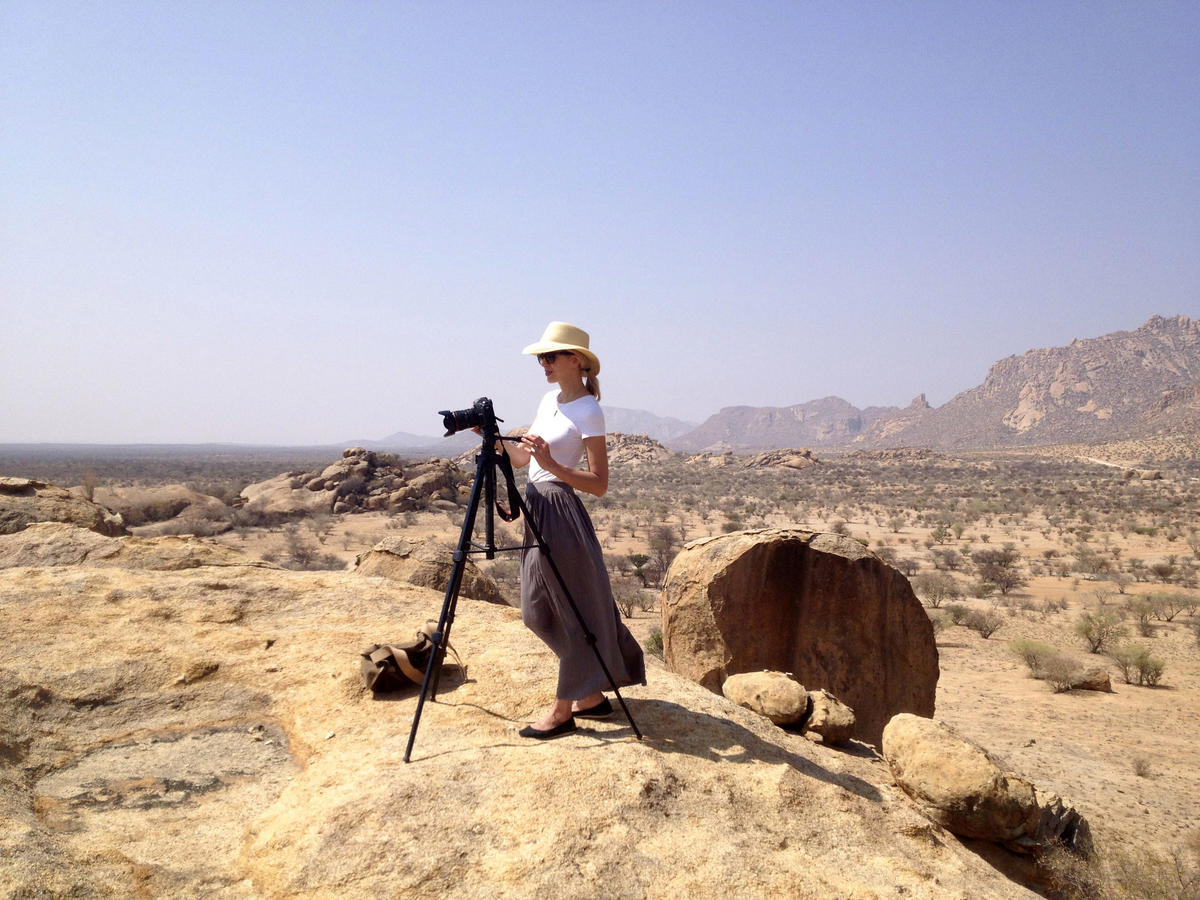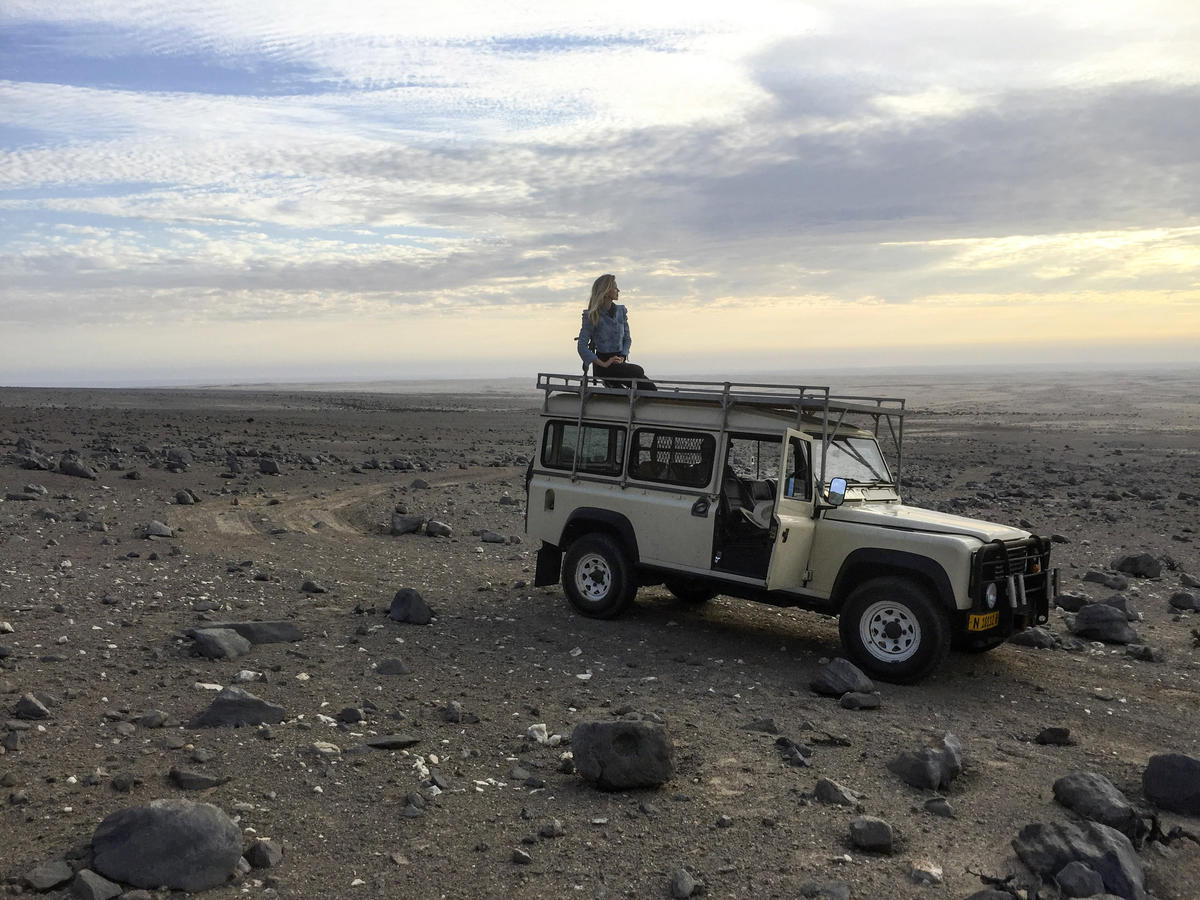- 1/1
Photo: Courtesy of Nicola Brandt
How would you describe the place you work/ your studio? Where is it located? What is the best time of the day for you to work?
I would say the better part of me is out there working in the field, immersed in the landscape and meeting people – hearing their stories, and then of course, there’s the production part, which is the slog. Editing, editing, editing ̶ images and text. It is slow, time-consuming, and sometimes frustrating, and yet as the critic Sean O’Toole has said, what it yields can be bountiful.
What inspires you in your work? What is the main motivation to create?
It starts with an idea, usually linked to a particular landscape. I’m drawn to what it means to be human in relationship to a place. I am also interested in the political work that memory does in the present.
With the recent death of the critic and curator Okwui Enwezor, I have returned to his essays on a few of his seminal projects, including The Short Century, Archive Fever and Documenta 11. I appreciate Enwezor’s approach to expanded historical narratives. This exhibition (The Hannah Ryggen Triennale: New Land), brings together the work of political artists from different backgrounds, and relates it to Ryggen’s legacy.
I’m interested in the points of connection between people, places, images, and images and text. I can relate to a description that Enwezor made some years ago, when he watched waves crashing in South Africa at the extreme southern tip of the continent. He said, ‘I was astonished by the experience of standing there, where the two oceans met,’ he later recalled. ‘I knew at that very moment this would be my concept: the meeting of worlds.’
What are the challenges you face in your artistic practice?
I am reminded every day that I am speaking from an ‘embodied’ perspective, and that it will always be a partial perspective. Another challenge is learning to work within given circumstances that often have practical, financial and time constraints, especially when projects require careful and deep thinking, but also a degree of risk-taking and a visceral connection with the subject. I think one can find new ways of allowing one’s circumstances to be a source of empowerment, rather than a hindrance.
Have you experimented with other mediums? Maybe thought about working in other fields?
I work across disciplines, but it began with photography and video. I recently tried casting a sculpture in wax, and I once again appreciated that one’s craft needs a long time to evolve, and of course, incredible focus. I think contemporary artists sometimes forget this, especially if they’re working in diverse media.
What are you reading right now? Which are some of your favourite thinkers, artists and musicians?
I’m in the process of publishing my own book entitled Landscapes Between Then and Now, which has encouraged me to read quite widely and in interrelated fields over the past few years. I’m currently re-reading parts of Luigi Ghirri’s The Complete Essays 1973 ̶ 1991 and bell hooks’ book belonging: a culture of place.
What exhibitions and projects are coming up for you in 2019?
I’ve contributed work to an immersive cross-disciplinary performance with a collective of Namibian artists under the direction of the choreographer and educator Trixie Munyama. The work is called The Mourning Citizen and explores themes of embodied remembrance and healing in relationship to specific colonial legacies and sites.
I am also working on two new projects, the first continues the theme of landscape, in relationship to different kinds of time, and the second looks at the subject of power and the mobility of capital and how it moves around the world. I plan to work on these projects during an artist’s residency at the Iwalewalehaus in Bayreuth in Germany over the summer. If all goes well, I aim to set up a studio in Germany in the second part of the year.
- 1/1
At work in Namibia. Photo: Courtesy of Nicola Brandt

